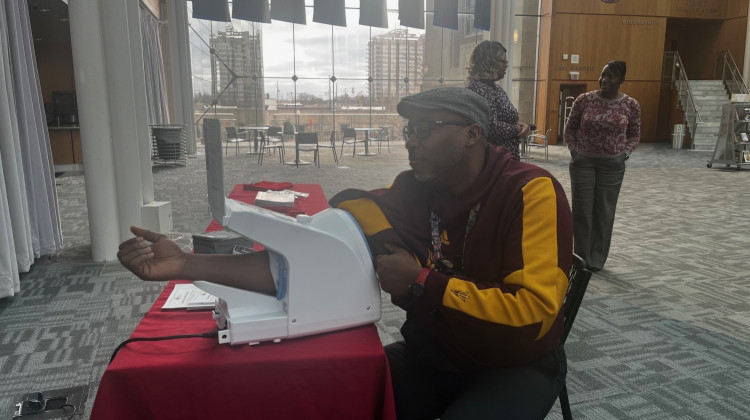
The Indianapolis Indians hosted Peanut Allergy Awareness Night Wednesday at Victory Field.
Doug JaggersFor Lauren Kossack and her family, a trip to Victory Field to see the Indianapolis Indians play would usually filled with caution.
The staples of ballpark diets – peanuts and Cracker Jack – create a hazardous environment for her 4-year-old son, who has a peanut allergy. Just sitting in a seat where someone had eaten peanuts the night before, can make him itch. And it can get much worse. If the exposure is enough to create an anaphylactic reaction, swelling in his throat could make it impossible to breathe.
“If you witness an anaphylactic reaction, it’s just completely terrifying,” Kossack said.
But the Indians made sure Kossacks – and thousands of other families facing peanut allergies – could breathe little easier Wednesday night, by turning the entire ballpark into a peanut-free zone. No peanuts. No Cracker Jack. No food fried in peanut oil. Staff members even gave the ballpark and extra cleaning to make sure the stands were free of peanut shells and residue.
Jon Glesing, senior marketing and communications manager for the Indians, said families have reached out through the years to inquire about peanut-free night at the ballpark. It raised awareness in the front office, and led to Wednesday’s Peanut Allergy Awareness Night.
“We’re not unlike other ballparks where families and children affected by peanut allergies just can’t come to baseball games,” Glesing said. “And they want to come here. So, it makes sense, especially in the course of a 72-game home season, that we should be able to find one game to create an environment safe for them.”
The Kossacks came to their first ballgame last season. They sat on the lawn to limit their son’s exposure to the peanut residue, and they took other precautions. (Lauren says being the parent of a child with allergies is a constant balancing act between being the overprotective “crazy mom” and being proactive in spotting danger.)
“We brought a lot of family and friends to kind of bubble them in,” Kossack said with a chuckle. “It was successful. We did have a guy that sat fairly close to us and opened up a big bag of peanuts…so my anxiety level rose a little bit. But, it was towards the end of the game, so we just left. It was no big deal.”
A Growing Problem
Kossack is also the coordinator of Indianapolis chapter of Parents of Children Having Allergies, the group that partnered with the Indians on the awareness event. She says the number of families dealing with peanut and other food allergies is larger than even she realized when her children were first diagnosed.
More than 3 million Americans report having an allergy to peanuts, tree nuts or both. About 1-in-13 children have peanut allergies.
“In your average class size, that’s about two per class,” Kossack said.
Peanut allergies are a big enough problem that some ballparks around the country offer peanut-free zones for every game. Glesing said the Indians are familiar with those amenities, but aren’t quite ready to make that happen at Victory Field.
“We’re going to walk before we run on something like that. We figure this is a good chance to kind of try it out, see logistically what’s involved,” he said. “So far, so good. I think we’re on to something.”
Even if it was just for one night, Kossack said her boys were relishing the opportunity to do something most baseball fans take for granted.
“This will be the first time they get to sit in the stands,” she said, “which is really exciting for them.”
 DONATE
DONATE







 Support WFYI. We can't do it without you.
Support WFYI. We can't do it without you.